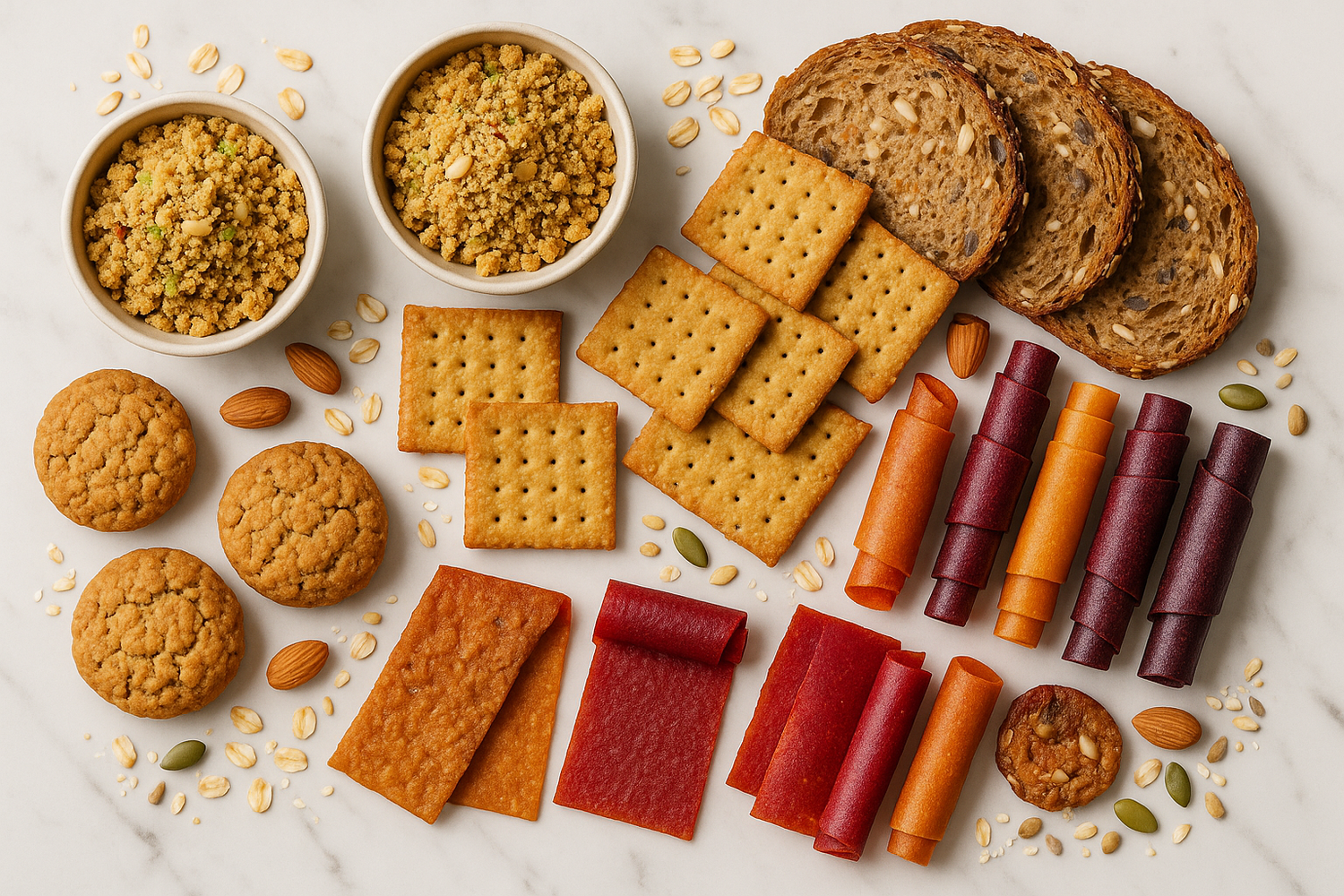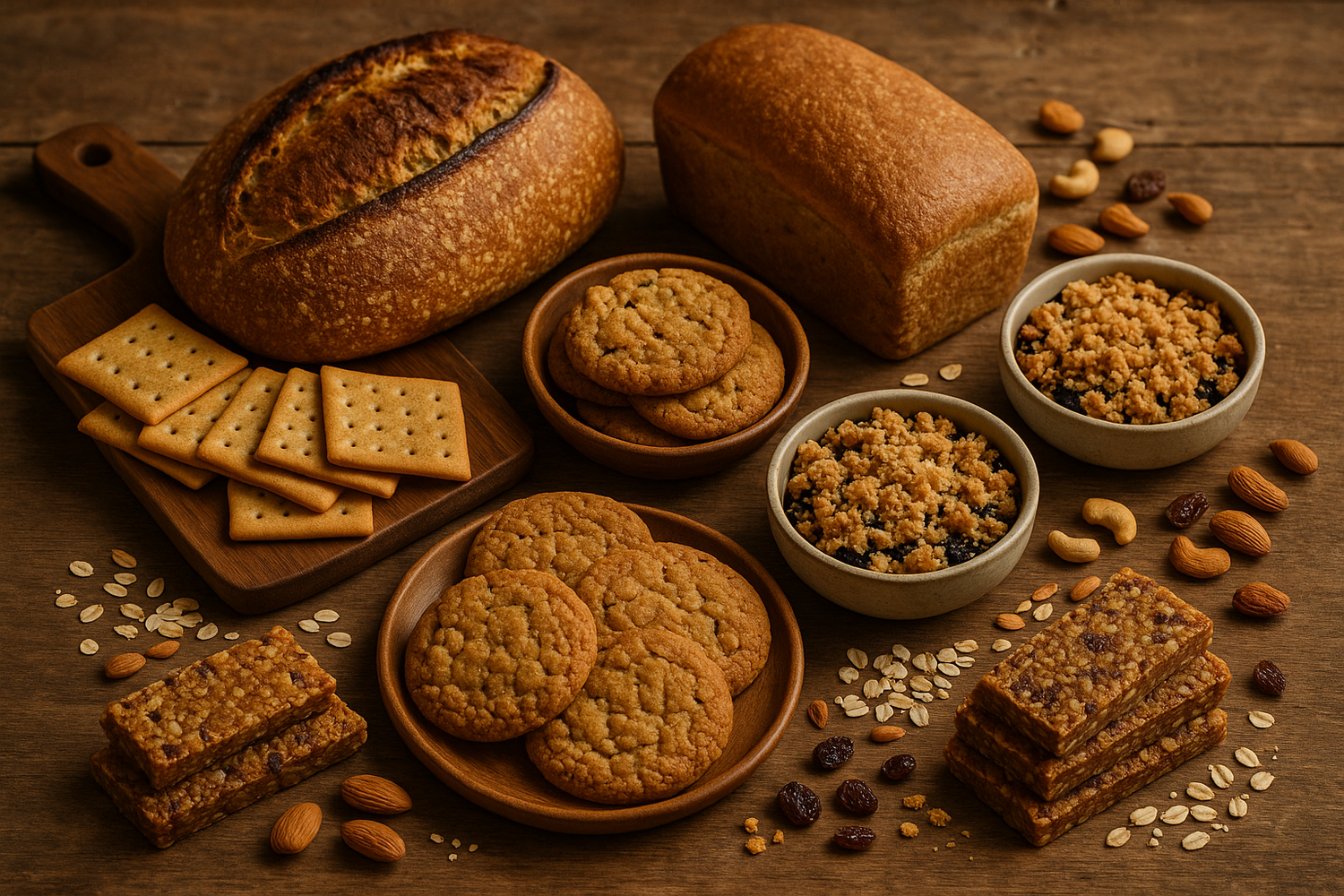Smart Snacking: Why What You Eat Between Meals Matters
Snacking gets a bad rap, but done right, it’s one of the most underutilized tools for better health. Meals are important, but they can’t always cover every nutrient, every moment of energy, or every craving. Smart snacking bridges those gaps.
- Filling Nutrient Gaps
- Maintaining Energy Throughout the Day
- Why Snacking Can Prevent Overeating
- Snacks & Recovery for Active Lives
- Why Main Meals May Not Be Enough
- What Makes a Good Snack
- Snack Ideas You’ll Love
- Myth Busting Around Snacking
- Final Takeaways & Action Steps
- Explore Healthy Snack Options
⚠️ Filling Nutrient Gaps
Even when you eat three solid meals a day, it’s common to miss key nutrients. In Canada, for example, average fibre intake among adults is only ~18.4 g/day for men and ~16.2 g/day for women, well below Canada’s recommended levels of 38 g/day for men and 25 g/day for women. (Canadian study on dietary fibre intakes)
Other nutrients often shortchanged include vitamin D, calcium, magnesium, and B‑vitamins. National health surveys show many people fall below dietary reference intakes for these minerals and vitamins. Snacks offer a powerful opportunity to plug those nutritional holes.
⚡ Maintaining Energy Throughout the Day
Going long periods without food can lead to blood sugar dips, leaving you tired, unfocused, or reaching for quick-carb fixes. According to Harvard’s “Science of Snacking”, combining snacks with protein or healthy fats slows glucose release, stabilizing energy and helping avoid mid‑day crashes.
🍽 Why Snacking Can Prevent Overeating
If you wait until you're starving, you may overeat at your next meal, often with less nutritious choices. Smart snacking keeps you satisfied, reducing overeating. Studies show that mindful snacking improves overall diet quality. (Nature: Snacking Patterns in Adolescents)
🏋️ Snacks & Recovery for Active Lives
For those who exercise, whether lightly or intensively, snacks play a dual role: pre‑workout fuel & post‑workout recovery. Healthy snack choices (nuts, seeds, protein + carbs) support muscle repair, replenish energy stores, and improve performance.
🍴 Why Main Meals May Not Be Enough
- Busy schedules can lead to rushed meals or missing food groups.
- Portion sizes at meals often don’t reflect individual energy needs, especially for active or demanding days.
- Meals may not cover every nutrient your body needs, especially micronutrients.
- Snackable moments provide a chance to include variety and nutrients not always present in main meals.
✅ What Makes a Good Snack
A quality snack does more than just taste good. It should:
- Contain protein (nuts, seeds, eggs, yogurt, or plant‑based blends).
- Include fibre or wholesome carbohydrates (fruit, whole grains, vegetables).
- Have healthy fats that support fullness (e.g. almonds, flaxseed, coconut).
- Be low in refined sugars and avoid unhealthy fats.
- Feature real, recognizable ingredients and minimal processing.
- Be portion‑aware, snacks should complement meals, not replace them.
🌿 Snack Ideas You’ll Love
- Mid‑morning: fruit + a handful of mixed nuts + a spoonful of Golden Crumbles (Panjeeri).
- Pre‑workout: banana or granola bar with seed crunch.
- Post‑workout: almond‑date bites or protein bread slice.
- Afternoon slump: seed crackers + hummus; coconut bites.
- Evening: herbal tea + small portion of sugar‑free cookies or fruit roll‑ups.
🔎 Myth Busting Around Snacking
Myth: Snacking always causes weight gain. Truth: It’s what you snack and when. Smart snacks can help prevent overeating. (Harvard Smart Snack Strategies)
Myth: Healthy snacks taste boring or expensive. You can enjoy snacks that taste great and are nutrient‑dense without breaking your budget.
Myth: If you eat three meals, you don’t need snacks. Many people still miss nutrients, experience energy slumps, or have increased hunger between meals.
🔑 Final Takeaways & Action Steps
- Evaluate your current snack choices, what nutrients do they add or omit?
- Choose snacks with protein, fibre, and healthy fats.
- Make healthy snacks visible and accessible.
- Plan snack times into your day: mid‑morning, mid‑afternoon, pre/post workout.
- Rotate snacks to cover a variety of nutrients: fruit, nuts, seeds, etc.



